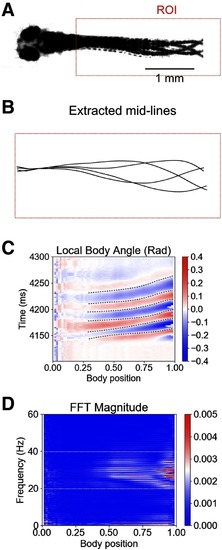Figure 1.
- ID
- ZDB-FIG-200225-14
- Publication
- Roussel et al., 2020 - Spatiotemporal transition in the role of synaptic inhibition to the tail beat rhythm of developing larval zebrafish
- Other Figures
- All Figure Page
- Back to All Figure Page
|
Larval zebrafish tail beat frequency during swimming is mainly between 20 and 40 Hz. |

